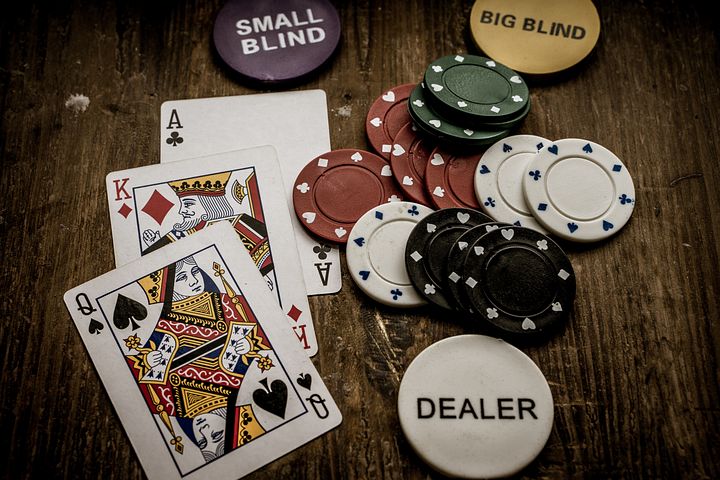One of the most challenging parts of playing Texas Holdem is defending your big blinds. It means you must decide how to play hands while knowing the player has already put money in the pot before seeing their cards. It’s a tricky situation that requires careful thought and strategy if you want to come out ahead. In this article, we’ll discuss some key strategies for defending your big blinds in Texas Holdem so that you can maximize your chances of success at the table.

Consider Position When Defending the Blinds
The position is essential to consider when protecting your blinds. The pre-flop ranges tend to get larger the closer it comes to the player who acts last on the deal. So, it’s crucial to understand where the raise came from.
Your defense range must be more condensed if the player who raises is nearby. As a result, it is safe to get wider and defend with weaker cards if the player holding the button raises.
Knowing the type of player who is raising the bet is also crucial. A maniac would go all-in with every card they could get their hands on, but a passive player wouldn’t raise much, even from the button.
Blind Defense
Defend When Short-Stacked
Mastering the art of defending blinds when short-stacked is essential for every serious poker player. When the chips start to dwindle, and the pressure is on, it’s crucial to display your expertise at the table and make strategic moves to optimize your chances for a strong comeback.
What you need in this situation is to realize your equity. For example, when you have 100 big blinds (BB), hands like K9o and A7o, for instance, will typically not be profitable defenders since their equity realization is much smaller when deep-stacked.
Say, for instance, that you have K9o against an Under The Gun (UTG) opening range and 100BB in your stack. Given the correct pricing and your pre-flop equity of about 35%, you ought to be able to call, but not always.
You must consider how frequently you will see all five cards and earn 100% of your equity. However, in an identical scenario with a 20BB stack size, your equity realization increases significantly even though you have fewer chips. You can call now at a profit. This is so that you may more fully realize your equity when you can invest all your funds at once.

3-Bet Suited Connectors
Using poker solvers (a poker software that calculates strategies) can limit some of your opponent’s value range with a high card, offsuit cards, solvers that prefer to 3-bet bluff in the big blind frequently use these hands. This is all good, but remember that these high-card hands will be tough to play if they don’t get a pair on the flop.
Playing post-flop will be extremely challenging if you get called and 3-bet bluff using an offsuit broadway. You may frequently find yourself confused about what to do. Even when these high card hands produce a pair, a powerful UTG raise/call range often has a chance to out-kick them.
Making judgments post-flop with hands like suited connectors when 3-betting can help you avoid losing any Expected Value (EV) by not playing purely Game Theory Optimal (GTO) strategy. Playability can be exchanged for decent blocking effects, ultimately raising your EV. You can play aggressively post-flop even if you don’t make a pair by 3-betting playable suited connectors like 76s, 97s, and 65s since you can continue to bluff with equity.
Participate in Pots With Amateur Players
You can play more pots against amateur players and expand your big blind defense range. Yet, it’s crucial to avoid going overboard with this since, sometimes, playing too wide just because of your ego can affect your Texas Holdem games. Remember to be clear on the weakness you wish to exploit when extending your range.
You cannot begin to loosen your range as an exploit until you know what you plan to do. Is your adversary a calling station or a maniac? Are you never going to bluff? Are you going to fire away for value? They are concrete things you need to consider when you want to exploit weaker players. If you cannot identify a specific pattern to adjust exploitatively, be careful not to play Texas Holdem loosely.
Re-Raise Blind Stealers
You should try re-raising blind stealers that often raise by using any medium pocket pairings, K-Q, A-J, or A-10. Here’s why you should take a little extra risk under these circumstances.

Why Defend Your Big Blind?
Defending big blinds in poker is not just part of a winning strategy; it’s a crucial aspect that reflects the expertise and skillfulness of a player. You may already understand that in this fast-paced game, every chip counts, and clinging to this often-overlooked position can give you a significant edge.
Aggressively defending your big blinds helps you keep pot odds in your favor and exploit opponents’ tendencies to squeeze from late positions. Additionally, it allows you to maintain the equilibrium between folding and calling, showing a solid understanding of the game’s intricacies. So, as you study your opponents and carefully calculate your next move, remember to play your big blind with prowess.
Conclusion
Defending your big blinds is essential to a winning Texas Holdem poker strategy. By 3-betting with suited connectors or participating in pots with amateur players, and re-raising blind stealers, you can increase the chances of success when playing from this position. Remember that having clear objectives and understanding what weaknesses you wish to exploit is critical to maximizing profits in any given situation. With these principles in mind, you will have all the tools needed to make sound decisions.




